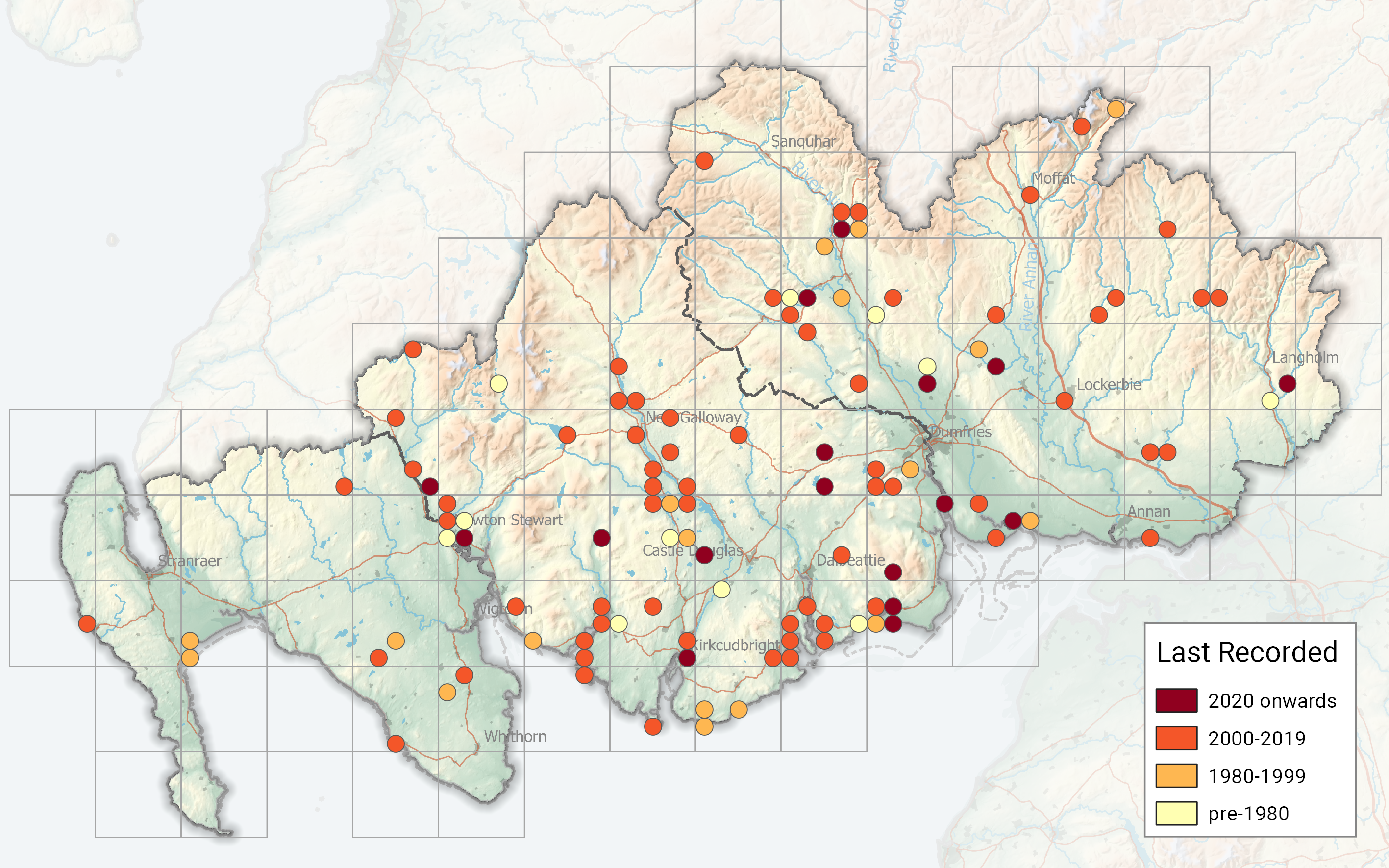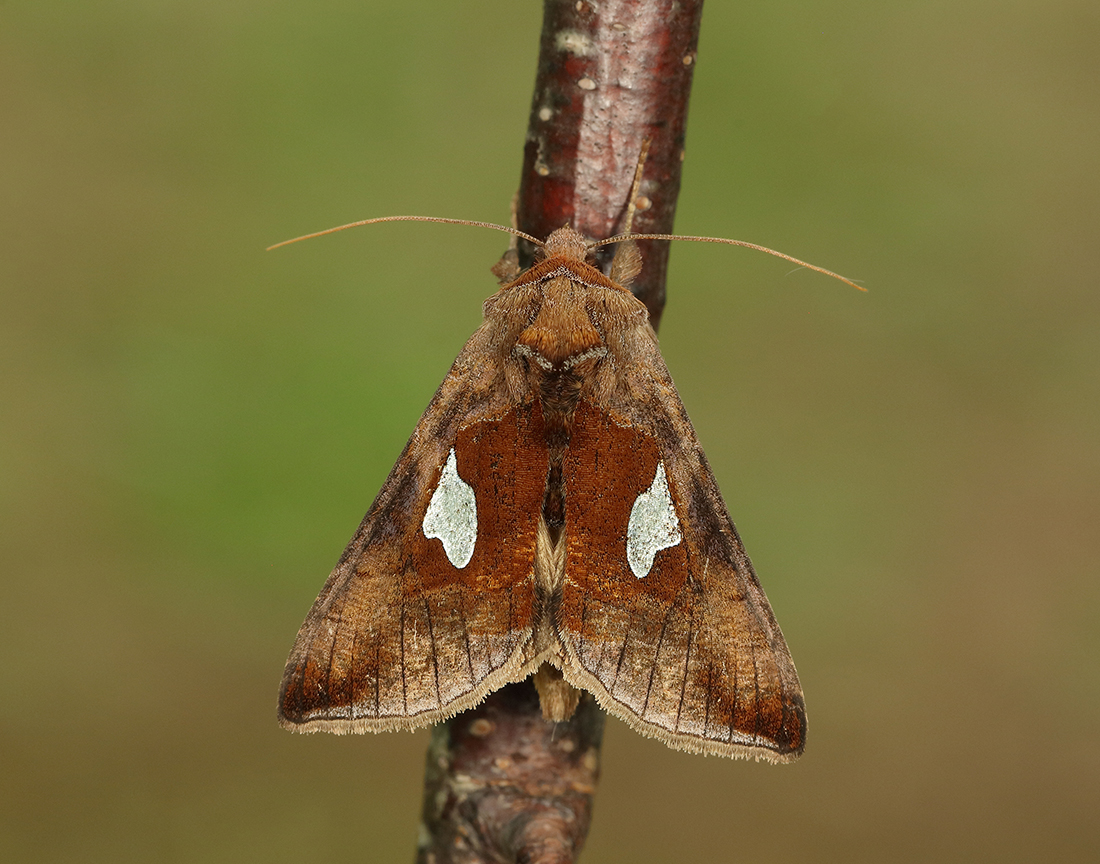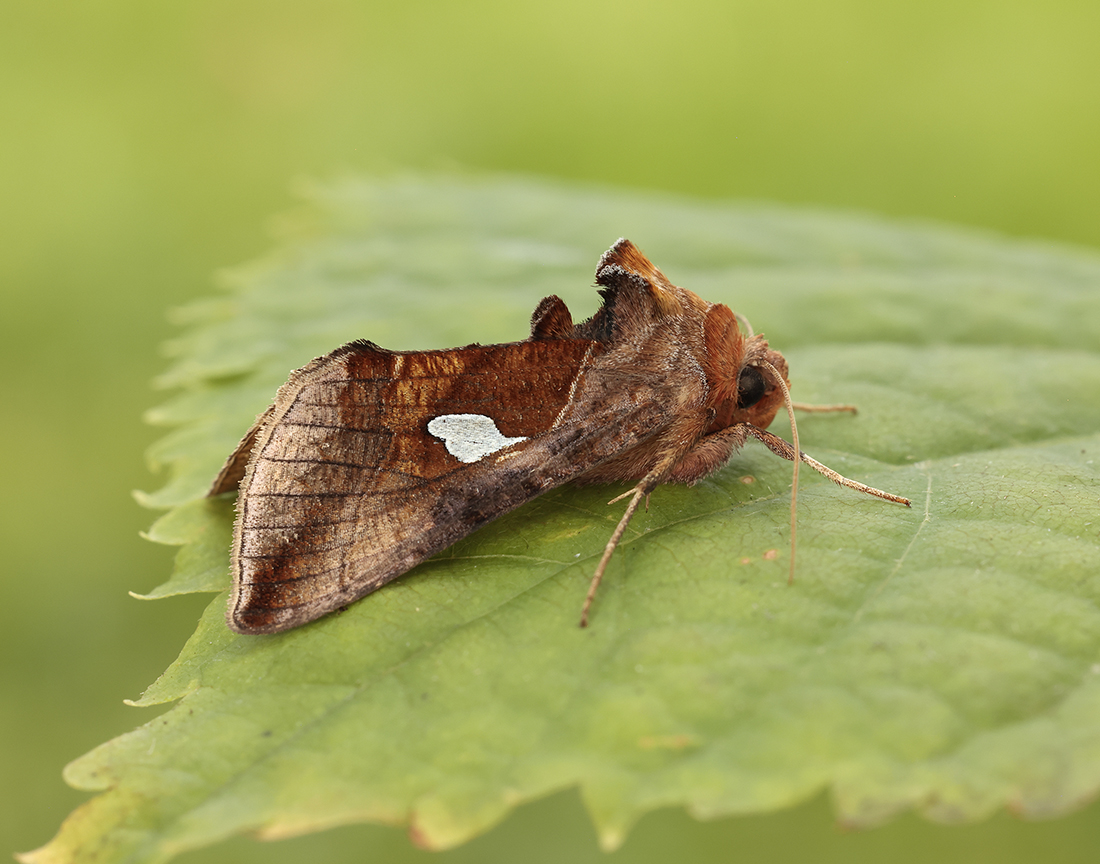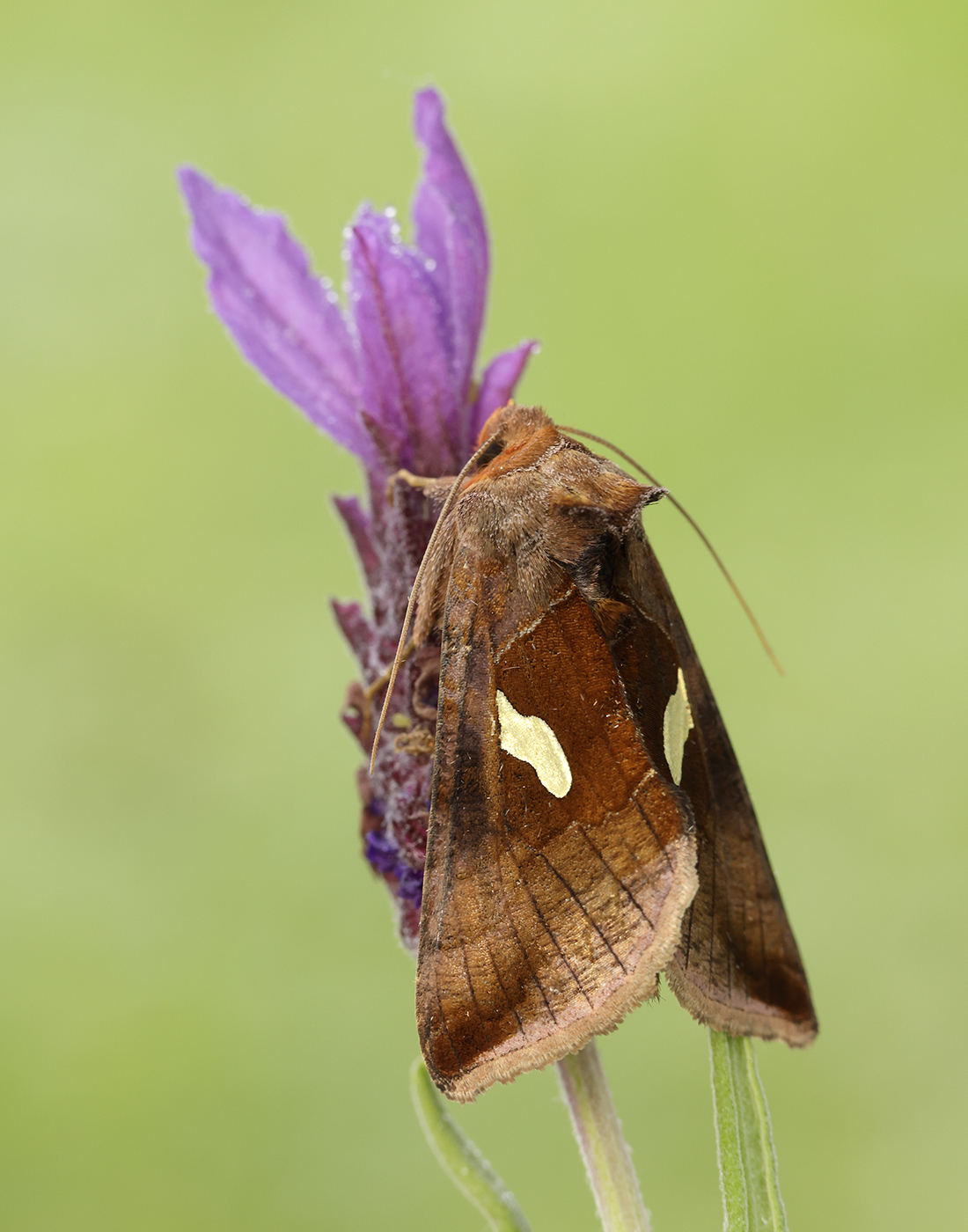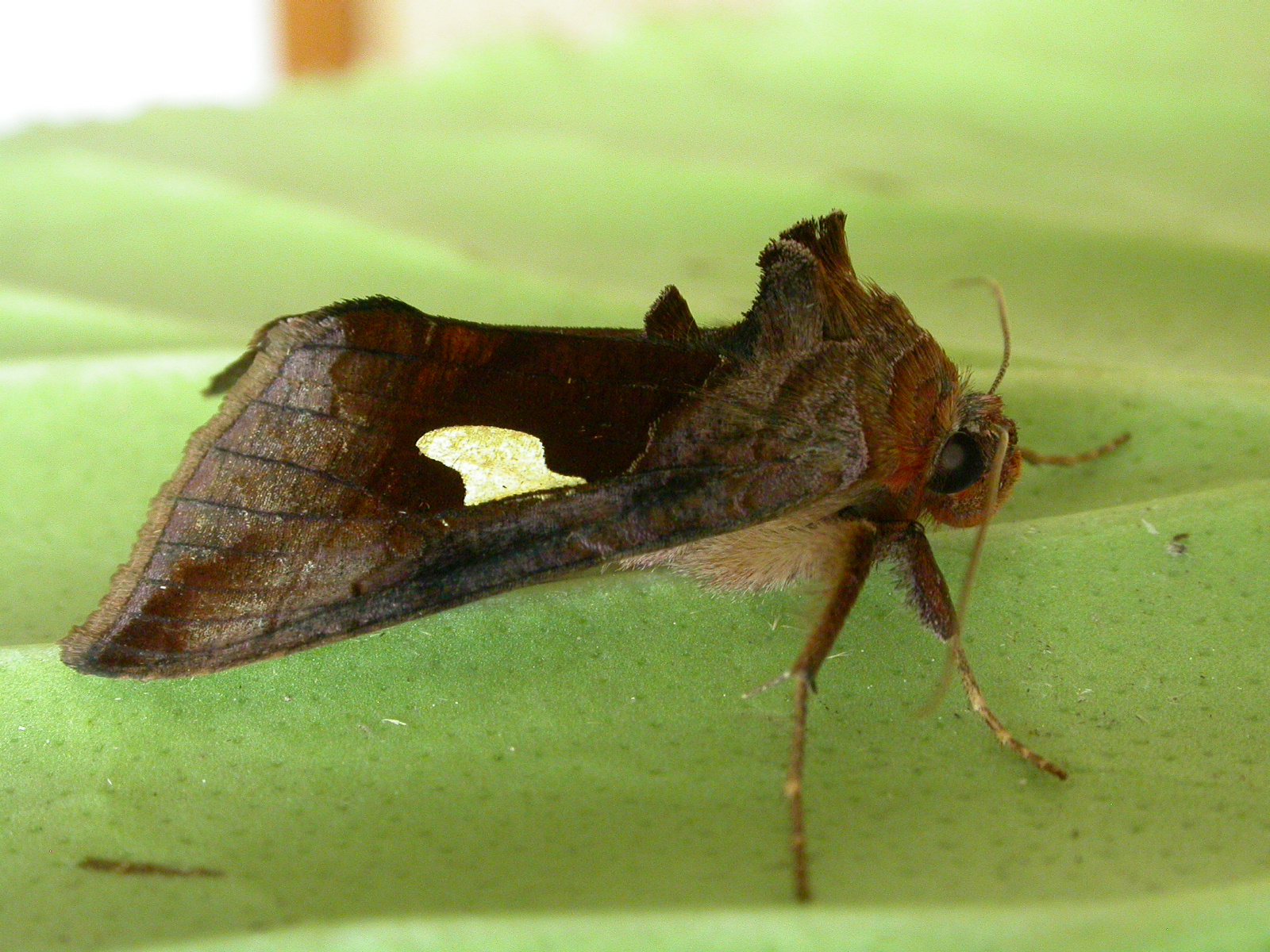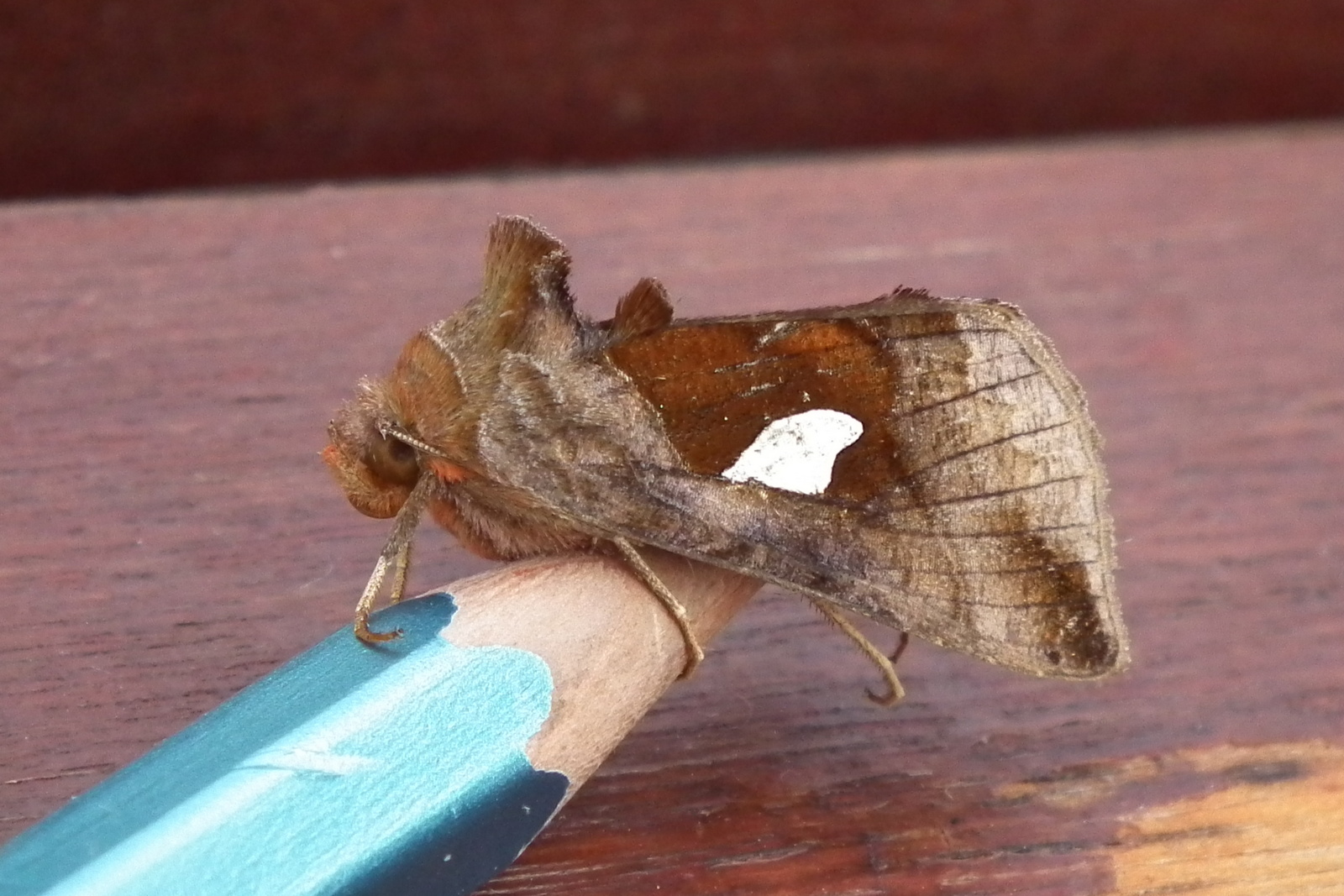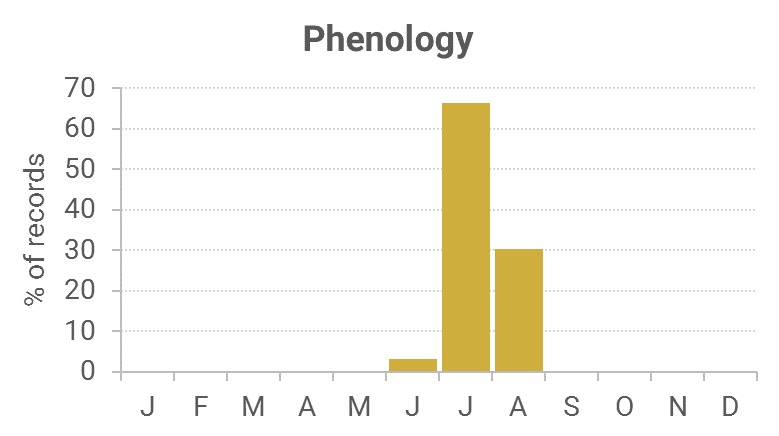Identification
The reddish-brown plain forewing with a bright large golden mark in the centre, shaped like a twisted triangle is diagnostic.
Recording Method.
Attracted to light and can be seen feeding on flowers at dusk.
Life Cycle
One generation. Overwinters as a small larva during August to May. Pupation takes place in a cocoon which was formed under a leaf of the foodplant.
Larval foodplants
Common Nettle, Ground-ivy, Honeysuckle, Bilberry and many other herbaceous plants.
Habitat
Upland pasture, hedgerows, gardens, woodland edges and rides and moorland.
History
Somerville (1858) on a trip to the Moffat area had found it at Kirkpatrick in August of that year. Lennon (1863) noted it as very rare only having found it at Lochaber in the Mabie Forest (VC73). R. S. Gordon (1913) thought it was generally distributed, particularly at flowers of honeysuckle and valerian. Some years it was very common, like in 1895 when large numbers were seen. Earliest date was 25th June 1895 with the latest 5th August 1897.
Sir Arthur Duncan (1909-84) during his lifetime had found it at Closeburn and Castlehill, Dumfries. Our only records during the 1960s were found by Pelham-Clinton at Caulkerbush and Kirkbean (VC73). The early 1970s produced records from Irvine House lodge at Auchenrivock, the Silver Flowe and Portpatrick, a widespread selection, being one from each vice-county.
During 1974-81 six of the seven Rothamsted stations meagerly recorded it, with Mabie Forest unrecorded. As Mabie was set up later, it is interesting to note it was missing in the late 1980s, early 1990s there. However, on the Hensol Estate, it was trapped during 1981-83 and during August 1987 Bernard Skinner found it at Sandhead (VC74).
From 1992 to 2010 the regular trapped sites like Kirkton, Durisdeer and Cally Woods recorded it, while elsewhere in VCs 73 and 74 it was found at a number of widespread sites, and also at an upland site at Corserig Hill, Kelloholm (VC72).

